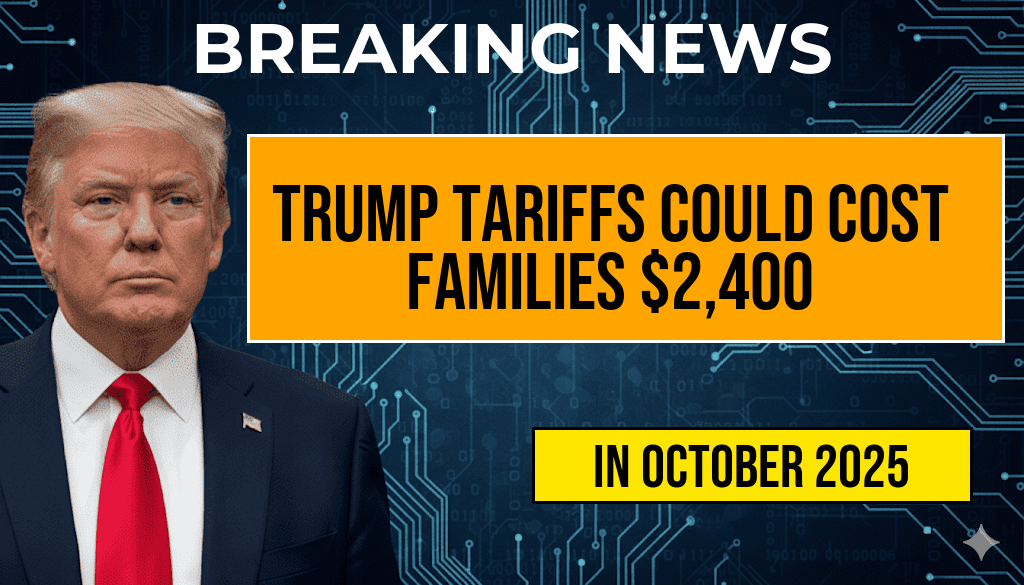Recent policy proposals under consideration could significantly impact the financial stability of the American middle class, potentially reducing average household incomes by approximately $1,300 in 2027. Experts warn that new tax measures, altered social programs, and regulatory changes might disproportionately burden middle-income families, forcing many to reconsider their household budgets and long-term financial plans. With middle-income earners already facing rising living costs, these proposed shifts threaten to widen economic disparities unless carefully reevaluated.
Background on Current Economic Trends
Over the past decade, middle-class households have experienced fluctuating income levels amid inflationary pressures and shifting labor markets. According to recent data from the U.S. Census Bureau, the median household income stood at approximately $70,000 in 2022, but the pace of income growth has lagged behind rising costs for housing, healthcare, and education. As a result, many middle-income families have seen their purchasing power erode, making any further policy-induced reductions particularly concerning.
The Proposed Policy Changes and Their Potential Impact
Tax Policy Reforms
- Introduction of new surtaxes on high-income earners, which may lead to increased payroll taxes across the board.
- Possible elimination or reduction of deductions and credits typically claimed by middle-income taxpayers, such as the Child Tax Credit and earned income tax credits.
Social Program Modifications
- Proposals to scale back or tighten eligibility criteria for key social safety net programs including Medicaid, SNAP, and housing assistance.
- Potential cap on benefits or stricter income thresholds that could exclude many middle-class families from support services.
Regulatory and Economic Implications
- Increased corporate taxes might lead to slower wage growth or reduced investment, impacting job stability and income levels.
- Adjustments in minimum wage policies could be delayed or scaled back, affecting millions of workers in middle-income brackets.
Projected Financial Impact
Based on modeling by economic think tanks, these combined policy shifts could decrease the average income of middle-class households by around $1,300 in 2027. This figure accounts for reduced disposable income, diminished social benefits, and potential employment effects. The following table summarizes the expected income changes:
| Policy Area | Expected Impact | Estimated Income Reduction |
|---|---|---|
| Tax Reforms | Higher taxes on middle-income earners and reduced deductions | $600 |
| Social Program Cuts | Lower benefit payouts and eligibility | $400 |
| Labor and Regulatory Changes | Slower wage growth and job stability | $300 |
Regional and Demographic Variations
The financial toll is unlikely to be uniform across all middle-income households. Urban areas with higher living costs, such as San Francisco and New York City, could see even greater impacts due to the compounded effect of policy changes and existing economic pressures. Conversely, rural regions might experience less immediate impact but could face long-term employment challenges if investment declines.
Public Response and Political Debate
Lawmakers and advocacy groups remain divided over the proposed policies. Supporters argue that increased revenues are necessary to reduce the national deficit and fund critical infrastructure projects. Critics contend that these measures would disproportionately harm the middle class, potentially reversing gains made over the last decade and exacerbating economic inequality. Consumer advocacy organizations warn that even modest income reductions could lead to increased debt and reduced savings among middle-income families.
Looking Ahead
As discussions continue, analysts emphasize the importance of considering the broader economic ramifications. The Congressional Budget Office (CBO) and other institutions are expected to release detailed impact assessments in the coming months. Policymakers face the challenge of balancing fiscal responsibility with the need to support middle-income Americans who are increasingly vulnerable to economic shifts.
For a detailed overview of current economic policies and their implications, visit Wikipedia’s page on the U.S. economy. Additional analysis of tax reforms and social programs can be found on Forbes.
Frequently Asked Questions
What is the main concern discussed in the article?
The article highlights that the middle class is under threat due to proposed policies that could potentially reduce the average income by $1,300 in 2027.
Which policies are expected to impact the middle class financially?
The article examines proposed government policies related to tax reforms and social welfare programs that might lead to a decrease in income levels for the middle class.
How will the income reduction affect middle-class households?
A decrease of $1,300 in the average income could impact household spending power, savings, and overall financial stability.
Are there any measures suggested to mitigate these potential impacts?
The article discusses potential policy adjustments and economic strategies that could help protect or boost middle-class income levels in the future.
What are the broader implications of these proposed policies on the economy?
The article suggests that a reduction in middle class income could lead to slower economic growth, increased inequality, and reduced consumer spending.






